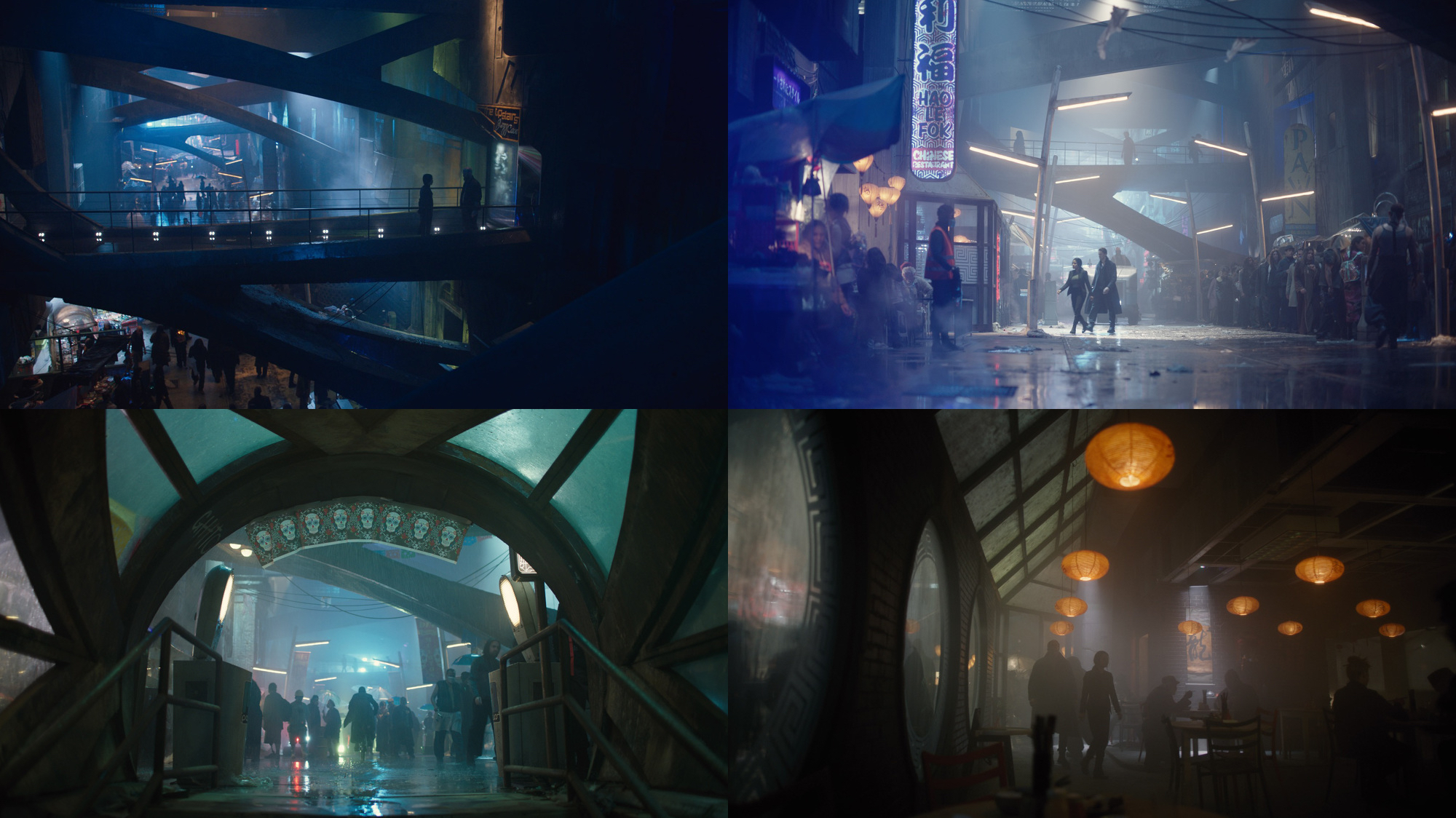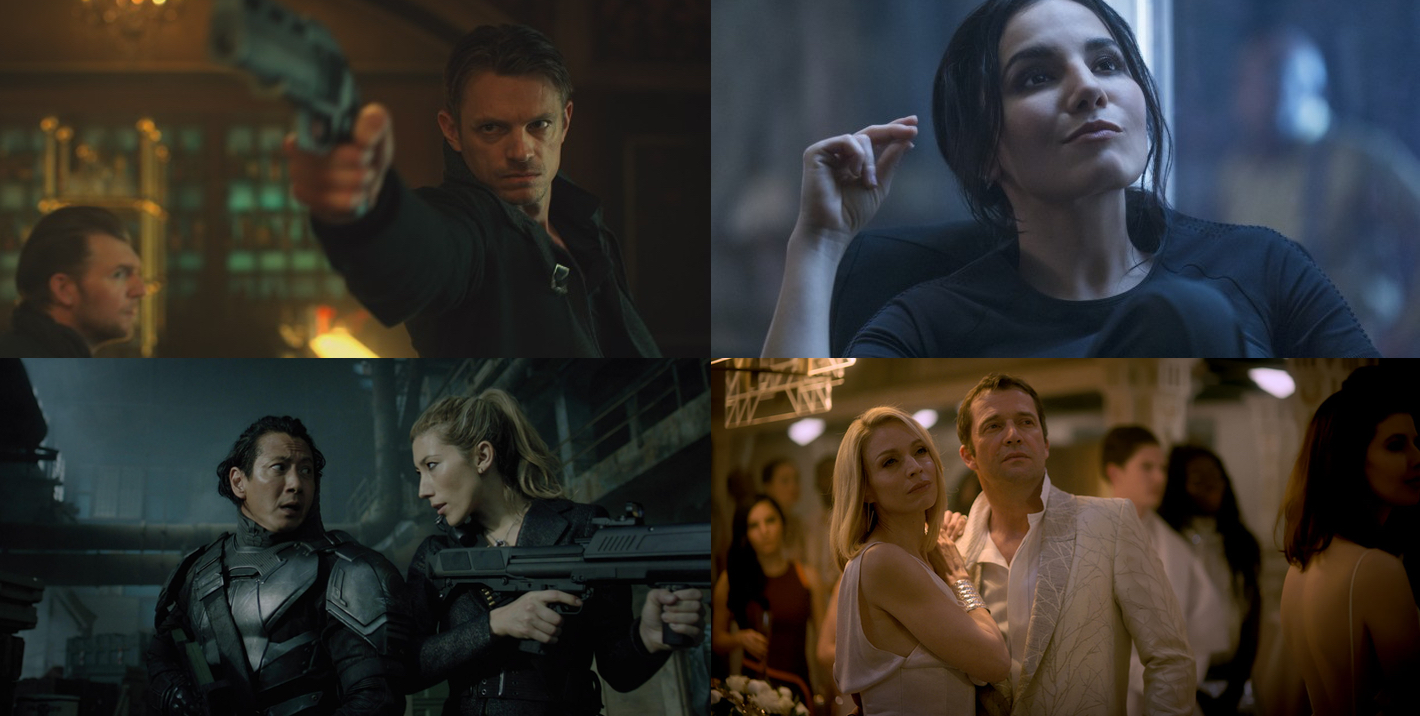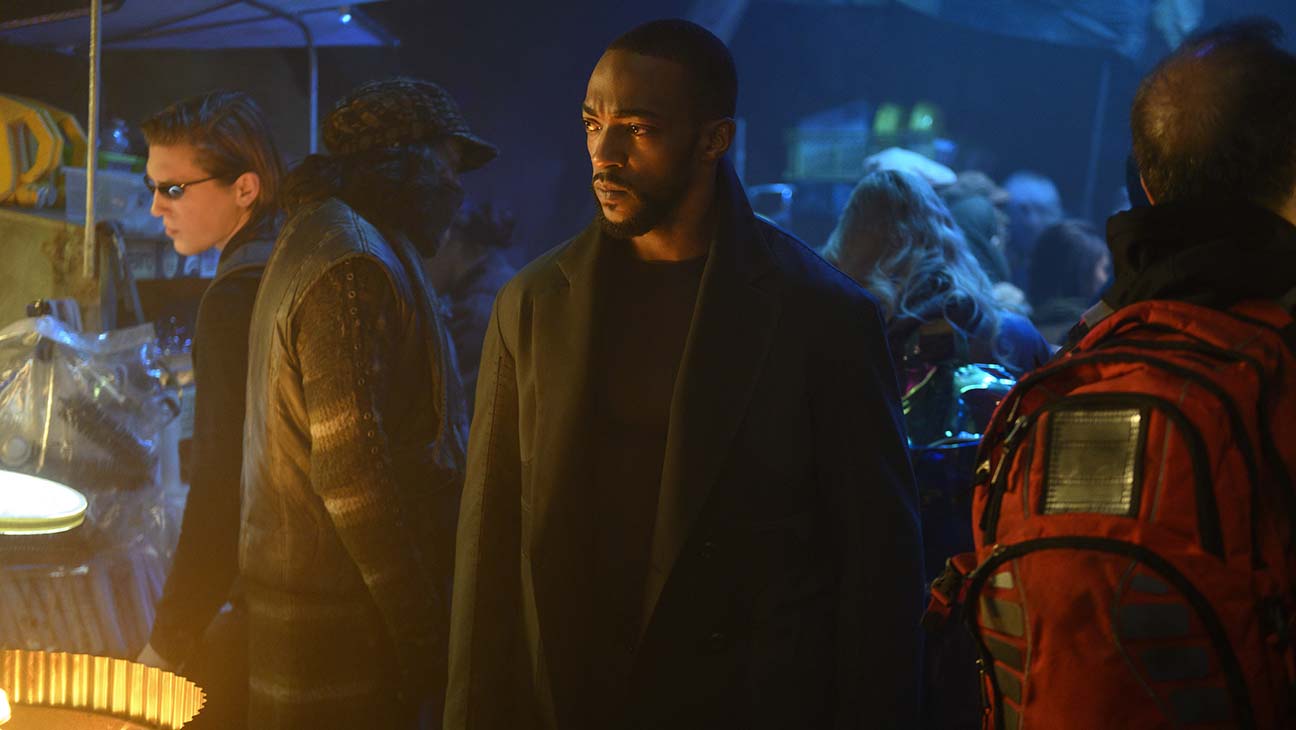Altered Carbon Review
Altered Carbon is cyberpunk, digitized human consciousness, class disparity, sex, drugs, and crime bundled into a polished show. Influenced by Blade Runner, Ghost in the Shell, The Matrix, and more classic sci-fi media, Altered Carbon beautifully treads new ground for a live action TV show.
We are cast into a world in which humans are able to transfer their consciousness into different bodies with the help of “cortical stacks” that are installed in the back of their necks. Human bodies are referred to as “sleeves,” and once a body is injured or too old, you can have your stack removed and transferred to a new sleeve—if you are able to afford one that is. The human body can be cloned, modified, and purchased, and it’s simply a vessel for the stack.
Season 1
Season 1 begins with Takeshi Kovacs (Joel Kinnaman), a CTAC officer (elite mercenary solider working for the government) later turned Envoy (elite mercenary revolutionary fighting against the government). He is awoken in a new sleeve several hundred years after his death at the hands of his old comrades by a wealthy meth by the name of Laurens Bancroft (James Purefoy). Bancroft’s reason for decanting an extremely dangerous and highly trained revolutionary? To solve his own murder.
Visuals
Very much an homage to Ridley Scott’s Blade Runner. It amazes me how immersive and polished TV shows are now. Altered Carbon’s visuals are what you’d expect from a big-budget sci-fi film today. Just take a look at a few shots from the show. Every moment of this film, you feel like the world is gritty, lived-in, and most of all very real.

Plot
Season 1 presents us with the mysterious murder of Laurens Bancroft. While this itself is a very compelling story, we are also treated to a second story that takes us through Takeshi Kovacs’s past life (where he is played by Will Yun Lee) through carefully placed flashbacks to his time as a CTAC officer as well an Envoy. For example, in S1E4, Kovacs is getting brutally tortured by a brutal gang member in VR. The mind is plugged into a simulation, or “construct,” so no real damage is done to his body, but mentally he feels all the pain of getting his nails ripped off, his body torched, etc. However, Kovacs is able to push through this, even though the people in charge tout their constructs as so intense they drive their victims insane. This is where the show gives us a flashback to Kovacs in his past life while he trains with his mentor Quellcrest Falconer (Renee Elise Goldsberry). We see how he learns to separate mind and body to overcome the construct. Normally, overused flashbacks like this come off as a bit cheesy, but because of the nature of this show where a new sleeve often marks a new life, it works very well.
One of the main themes in Altered Carbon is the human body as a commodity and its ethical implications. When human bodies are just like clothes you can change out of and replace, the definition of a human life dramatically changes. This is really taken to its limits when we see how the ultra rich meths live. In S1E3, we see the meths pitting a married couple against each other in a gladiatorial fight to the death. The winner gets a new sleeve. While the married couple voluntarily does this, we see how inhumane and corrupt the rich has become. Another example of this abuse of power is one woman putting a criminal’s stack into the body of a snake—arguably a punishment worse than death. This leads into the second big idea: unrestrained capitalism. Meths have their stacks remotely backed up and multiple clones of their body waiting for them so they can never die. They’ve become immortal gods amongst the people simply because of their centuries of accumulated wealth. This is highlighted by the fact that many of them live in extremely tall homes above the cloud level where they cannot be bothered by the “pestilence” that is those who live on the ground. There is no control, no regulations, because nobody, not even the government can touch them at their level of wealth.
Characters and Cast
Joel Kinnaman as Takeshi Kovacs in the present coupled with Will Yun Lee as Kovacs in the past makes for a really interesting pair. Kinnaman plays Kovacs in a very different way than Lee does. As an audience, we see how a man behaves after being revived several hundred years later in a world he does not want to live in with a past he would very much like to forget. While Lee’s portrayal is honest and caring, Kinnaman’s is cold and cynical (I actually think Kinnaman smiles a grand total of zero times in this show). Takeshi Kovacs’ relationships with his brief love interest Kristin Ortega (Martha Higareda), his sister Reileen Kawahara (Dichen Lachman), and his AI assistant Poe (Chris Conner) all feel natural and integral to the show.

Season 2
Season 2 picks up 30 years after the end of Season 1. Takeshi Kovacs is reunited with his old love and the leader of the uprising, Quellcrest Falconer. Together they have to save Harlan’s World from being destroyed by Elders, an ancient alien species that once inhabited the planet before humans.
Season 2 felt like a very different show. While Season 1 was a cyberpunk murder mystery, Season 2 is more like a superhero movie. There are lot more arbitrary deus ex-machinas, like when Kovacs is saved by Falconer at the very last minute when he is locked in a high-security prison or when Flaconer is suddenly able to control Angelfire when stuck in a tight situation. The stakes are also much higher. Instead of a conflict between a small web of characters, the entire planet is at stake. It’s another “we have to do this or the entire planet will be destroyed” plot, which is fine in a superhero movie, but just not what I expected from this show. Another small issue was the general overuse of buzzwords like “hacking” and “neurel-net.”
Anthony Mackie has a very interesting take on Takeshi Kovacs. He’s a lot more expressive and less gritty than Joel Kinnaman’s portrayal, which makes me question why Kovacs would behave like this after 30 years in a crime-infested awful world he did not choose to be a part of.

Conclusion
Altered Carbon presents decades old cyberpunk ideas in a brand new format. While we’ve seen all these tropes before, the show feels genuinely new. Season 1 was spectacular, and I might rewatch it one day. That being said, I think the show lost its way a bit for Season 2.
With anyone being able to take up the mantle of Takeshi Kovacs, as he can just pop into a new sleeve, I am really interested to see who will be cast for the next season and what new worlds he or she will take us to.